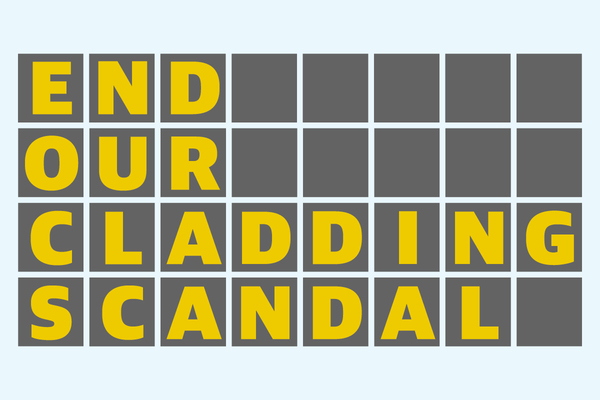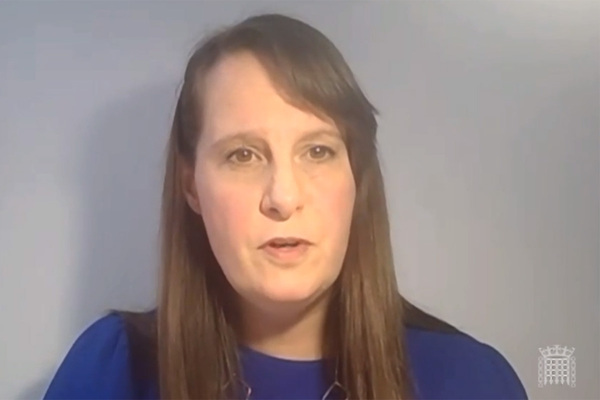You are viewing 1 of your 1 free articles

Legislation allowing action for building regulation breaches should be strengthened not repealed
Section 38 of the Building Act gives a route to action for building regulation breaches. Given the current crisis, why is the government quietly repealing it instead of strengthening it? ask Andrew Arden and Justin Bates
Between Grenfell and the Building Safety Bill, building regulations are in the news, but one bit of law that is directly related to building regulations is not.
Section 38 of the Building Act 1984 provides that, subject to qualification by regulation, a breach of the regulation that causes damage is actionable, yet it has never been brought into force and is now scheduled for repeal without any replacement.
Given that chair of the Grenfell Inquiry Sir Martin Moore-Bick in his phase one report expressly found that there had been a breach of building regulations in relation to the cladding on the external walls, this is a somewhat surprising course, on which the government first embarked when it consulted on whether to bring it into force and, if so, whether any amendments were required.
Although silent on the subject in its response to the consultation, the government later asserted that there was “no support” for it in the explanatory notes to the draft Building Safety Bill, noting that discussions with the Scottish government revealed that no claim had ever been brought under the Scottish equivalent provision.
Accordingly, the draft Building Safety Bill, due in parliament later this year, proposes repealing Section 38 in full, without offering any substitute.
Reading between the lines, “no support” is likely to mean that there was no response at all, neither support nor opposition. If there had been opposition, the government would have said so.
While it is very hard to see why, at the least tenant-oriented organisations should not have supported bringing it – or something else which would make breach directly actionable by those harmed by it – into force. The reality is that most such organisations have a somewhat narrower brief or that there is sometimes too narrow an approach to what comprises a ‘housing’ issue or ‘housing law’ so that its prospective repeal was simply not noticed, Grenfell notwithstanding.
That said, there is another way of reading “no support”.
When the private member bill that became the Homes (Fitness for Human Habitation) Act 2018 was initially under consideration, it included a provision which would bring Section 38 into force.
That bill became law with government support, but that support was conditional on dropping the Section 38 part of it.
It has long been believed that the construction industry is opposed to bringing Section 38 into force – something that is not difficult to believe and that this influenced the government’s attitude during the 2018 run-up to the act.
As to the Scottish experience that no claims had been brought, it does not suggest that the equivalent provision has not played a part in pre-action settlements although it may be noted that it has only been in force for 15 years, since 2005, which means that it is probable that nothing other than the most egregious breaches of the regulation would yet have come to light.
Other relevant considerations include the nature of the Scottish stock.
It is unlikely that bringing Section 38 into force would help at Grenfell as it would only apply to works pre-dating its commencement in limited circumstances, but it would apply to subsequent works elsewhere. On the face of it, it seems a highly useful tool for occupiers – eg long leaseholders – adversely affected by a breach; somewhat easier to prove than, for example, negligence; and wider in scope than breach of the Defective Premise Act 1972 (workmanlike and professional works so that property is fit for habitation).
Moreover, while it could have an impact on social landlords in their development activity, it would be a positive benefit in relation to their holdings derived from Section 106 agreements for affordable housing.
Without amendment, however, Section 38 would not cure either the exclusion of economic harm that is effectively written into its current form, which is not available in relation to negligence and only arguably under the Defective Premise Act, or the very real practical problem of development by a special purpose vehicle (SPV), ie a company incorporated for the sole purpose of carrying out the construction.
The problem here is that SPVs are invariably dissolved as soon as the work is completed and the development is sold – either to a pension fund or similar body seeking the income flow from ground rents or to an occupier-formed company – which then leaves purchasers without a defendant if they wish to bring proceedings for negligent work or even for contractual misrepresentations. (Of course, the power to restore a dissolved company provides no effective remedy; there is no purpose in restoring a company which has no assets to satisfy any money judgment).
Nor would bringing it into force address the limitation period that action needs to be brought within (as to which it is silent, which means that it is arguably 12 years but perhaps no more than six) which – again except for the more egregious cases – will commonly be inadequate (another reason Scotland may not have used its provision). It cannot sensibly be argued that work attracting the operation of the regulations is intended to last any less than 15 years or possibly more.
These are, however, details which are relatively easily resolved.
There is no reason not to extend Section 38 to allow a claim for economic harm, there is no reason not to mandate a 15-year or longer limitation period, and there is no reason not to enact that liability should comprise a charge on the property, with the effect that the claim can be made against the freeholder for the time being.
In turn that would generate market provisions – eg insurance or a bond – which would ensure that there is money available to fund remedial works and consequential damage.
It may well be preferable to draft a new provision in more modern legislative drafting terminology and with an eye to recent experience, not only at Grenfell but widely across the market, rather than to amend Section 38, but the prospective repeal will afford an opportunity for debate and a hook on which to hang it.
What is plainly not preferable in this day and age is to deny occupiers who have been harmed – in many cases, dramatically and and in life-changing way – without a direct remedy against those who have flouted the very regulations which are designed to protect them.
It might be thought that the time has never been more auspicious to ensure that there is one.
Andrew Arden QC, barrister, and Justin Bates, barrister, Landmark Chambers











